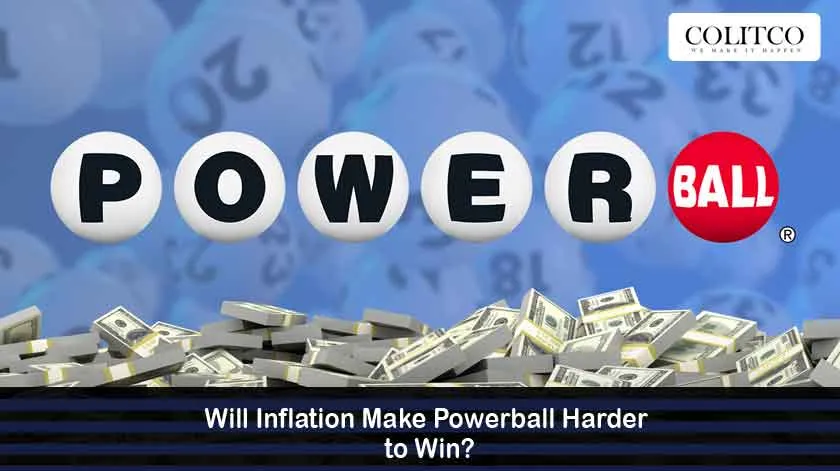Lottery organisers across the globe continue to modify game structures as economic pressures reshape consumer spending patterns. Recent changes to major lottery systems reveal how inflation influences both participation rates and winning probabilities. The question facing millions of players centres on whether rising costs make achieving lottery success more difficult.
Economic Forces Drive Lottery Modifications
Powerball underwent significant structural changes in 2015 that dramatically altered winning prospects. The lottery increased its main number pool from 59 to 69 balls while reducing the Powerball selection from 35 to 26 options. These modifications increased jackpot odds from 1 in 175.2 million to 1 in 292.2 million, representing a 66.8% decrease in winning probability.
The changes occurred as lottery sales declined nationwide. Officials designed the modifications to create larger jackpots that would attract more participants. Mega Millions implemented similar adjustments in 2017, changing its main pool from 75 to 70 numbers while expanding the Mega Ball selection from 15 to 25.
Industry experts confirm these changes served deliberate purposes. Carolyn Becker from the California Lottery stated the modifications aimed “to fuel bigger jackpots” through reduced winning odds. The strategy proved successful, generating five Powerball jackpots exceeding $1 billion since its 2015 implementation.

Powerball odds before and after 2015
Australian Market Responds to Inflationary Pressures
Australian lottery operators announced price increases reflecting broader economic conditions. The Lottery Corporation plans to raise Powerball ticket prices from $1.20 to $1.40 per game starting in November 2025, marking a 16.7% increase.
Sue van der Merwe, Managing Director of The Lottery Corporation, explained the changes would “reinforce Powerball’s position as our premium jackpot game”. The company reported revenue declined 6.2% year-on-year despite delivering three $100 million Powerball jackpots during the financial year.
The Australian pricing adjustment reflects global trends affecting lottery operations. Operating expenses increased 4.3% due to rising technology costs and inflationary pressures on materials, particularly paper products used for tickets. Company officials expressed concern about potential 30% tariff increases on Canadian paper imports that could significantly impact operational costs.

Sue van der Merwe, Managing Director of The Lottery Corporation
Inflation Shapes Player Behaviour Patterns
Research reveals inflation creates contradictory effects on lottery participation. While reduced disposable income may limit lottery spending, economic uncertainty simultaneously increases interest in high-reward, low-probability investments.
Academic studies demonstrate clear relationships between economic conditions and lottery participation. Lower-income households consistently spend larger percentages of their income on lottery tickets, with the poorest 1% of zip codes averaging $600 annually or nearly 5% of their income. Wealthier households spend only 0.15% of their income on lottery participation.
Players in lower-income areas demonstrate different behavioural patterns that reduce their expected returns. They choose games with lower payouts, select numbers manually rather than using random generation, and pick popular number combinations that must share prizes if won. These preferences result in 10% higher losses per ticket compared to higher-income players.
Interest Rates Amplify Prize Inflation
Federal Reserve interest rate policies significantly impact advertised lottery jackpots. Lottery organisations purchase securities to fund annuity payments over 30 years. Rising interest rates allow smaller cash pools to support larger advertised prizes through improved investment returns.
The relationship between interest rates and jackpot sizes creates misleading impressions about prize values. Professor Victor Matheson noted that current $1.7 billion jackpots would equal only $924 million under 2020 interest rate conditions. The cash option represents the true prize value, typically 45-60% of advertised amounts.
Current high interest rates enable annuity prizes to exceed cash values by 121%, compared to just 20% during low-rate periods. This mathematical relationship allows lottery operators to advertise increasingly large prizes without proportional increases in ticket sales revenue.
Ticket Price Escalation Outpaces General Inflation
Lottery ticket prices increase faster than general inflation rates across multiple jurisdictions. Mega Millions plans to raise prices from $2 to $5 in April 2025, representing a 150% increase. This compares to 75% general consumer price inflation since the game’s 2002 launch.
The price increases reflect strategic positioning rather than cost pressures alone. Katherine Hamilton, personal finance reporter, noted that million-dollar prizes have “lost their lustre” due to inflation and increased billionaire visibility in popular culture. Lottery officials target billion-dollar jackpots as psychologically compelling thresholds.
Research confirms billion-dollar jackpots generate disproportionate sales increases. Ticket sales surge specifically when jackpots cross the billion-dollar threshold, regardless of the mathematical insignificance compared to $900 million prizes.

Price increase comparison showing how lottery costs are rising faster than inflation
Statistical Reality Contradicts Marketing Claims
Mathematical analysis reveals lottery modifications consistently favour operators over players. Despite advertising larger prizes, the expected value per ticket decreases as odds worsen. Powerball’s 2015 changes reduced expected returns while increasing ticket prices from $1 to $2.
The Multi-State Lottery Association confirms that securities purchases fund prize payouts, with interest rate fluctuations affecting advertised amounts. However, players rarely select annuity options, with only two winners choosing delayed payments among 140 large Powerball jackpots over 15 years.
Academic research demonstrates that lottery demand responds more to expected jackpot value than ticket prices. Sales increase three times more from $1 jackpot increases compared to $1 price reductions, contradicting standard economic expectations for risk-averse consumers.
Regulatory Changes Compound Difficulty
Australian regulators approved structural modifications that mirror international trends toward reduced winning probability. The Lottery Corporation increased base week prizes from $4 million to $5 million while adjusting prize pool allocations across lower divisions.
These changes require regulatory approval and implementation timelines extending into late 2025. Players face transitional periods where advanced play options become unavailable as systems adapt to new structures.
International coordination among lottery operators suggests systematic approaches to managing player expectations and revenue optimisation. Both Powerball and Mega Millions implemented similar probability reductions within two years of each other.
Also Read: Fortune Unclaimed: Oz Lotto’s $15 Million Jackpot Awaits Winner As Deadline Looms
Economic Vulnerability Increases Participation
Research consistently identifies inverse relationships between socioeconomic status and lottery participation rates. The lowest socioeconomic quintile demonstrates 61% lottery participation rates with the highest average spending levels. Economic anxiety correlates with increased gambling behaviour, particularly among vulnerable populations.
Studies reveal lottery participation increases during economic crises as individuals seek “financial hope” through low-cost, high-reward opportunities. This pattern extends beyond traditional gambling into speculative financial markets, with similar psychological drivers affecting cryptocurrency and meme stock investments.
The phenomenon creates policy concerns about lottery systems functioning as regressive taxation mechanisms. Lower-income participants contribute disproportionately to lottery revenues while receiving systematically lower expected returns.

Income-based lottery spending patterns showing disproportionate impact on lower-income households
Future Implications for Players
Current trends suggest continued evolution toward larger advertised prizes with correspondingly reduced winning probabilities. Mega Millions price increases to $5 represent an unprecedented escalation in lottery participation costs. Australian operators signal similar directional changes despite smaller percentage increases.
Interest rate policies will continue influencing advertised jackpot sizes regardless of actual prize pool values. Players must distinguish between marketing figures and cash option amounts when evaluating participation decisions.
Academic research provides clear guidance for potential players. Expected negative returns persist across all lottery systems, with mathematical certainty of long-term losses. The recommendation remains treating lottery participation as entertainment rather than an investment strategy.
Economic conditions affecting lottery participation will likely persist as inflation concerns continue influencing consumer behaviour. Lower-income households face disproportionate impacts from both reduced disposable income and systematically worse lottery outcomes.












